Podcasts and Video
The New Stack: Context
I launched Context with the goal of introducing classic, NPR-style, radio-form storytelling to a podcast audience. Before Context, listeners were overwhelmed by a deluge of shows produced by folks who simply poked “Record” before starting their own unscripted conversations. Personally, I can’t stand listening to something I wouldn’t be able to stand reading, if it were printed.
So with memories of “Science Friday” and the original Ted Koppel “Nightline” in mind, I created a format where each show concentrated on an issue in the open source software and infrastructure development realm, where the answers or solutions were undecided, and the debate was balanced. Context was not a forum for sponsored content, unlike other programs produced by and for The New Stack. Rather, this was media that dove into an undecided issue, with balanced experts and varying perspectives.
Later that year, as I appeared in public for computing conferences, folks would come up to me to say there’s something familiar about me, but they couldn’t put their finger on it. Finally, at one open source conference, a fellow gasped and shouted, “I know! You’re the Guy with the Voice!” In some circles, the catch-phrase stuck.
The original Context is one of the creations I’m proudest of, over nearly four decades in this business. It framed the problems we face in information technology in exactly the way I’ve always imagined them: as serious dilemmas with two or more possible solutions, and the path forward not always being clear.
Not everyone understood this, from the perspective of content strategy. Brands and service providers prefer to project themselves as “solutions providers.” In sponsored podcasts, they get the opportunity to portray their solutions as having already solved one or more dilemmas, essentially unchallenged.
But content strategy is about presenting an audience with the information they want to see and hear. Sure, they’re looking for solutions, but framed in the context of the problems they themselves are facing. They’re looking for a little empathy here — for an acknowledgment that these problems are hard, and they’re not stupid for believing so. Audiences gravitate toward stories of challenges at the scale they presently perceive them to be. When a provider frames solutions as already solved, or at least solvable with the flick of a switch, the scale of the problem becomes diminished, as do their opinions of themselves and the situations they face.
I’ll always remember the comments from folks who told me how much they liked Context in its original form. I heard more than once, “You get it. You actually get it.”
ZDNet Explainer videos
ZDNet explainer videos were created to accompany articles published on ZDNet.com, while at the same time inhabiting their own exclusive URLs on the same domain. For a site that implemented a hub-and-spoke strategy, this added what I called an “axle.” For as long as three months, any ZDNet article that focused or even touched on the same topic, could embed the video as an element — the same video that was picking up viewers in its own URL — and in so doing, amplify its own authority for SEO purposes.
The downside of this approach was that the video format suited mainly two purposes, though not three: accompanying articles, and garnering viewers on ZDNet.com. These were not particularly well-suited for YouTube visitors, and for that reason, they didn’t gather many viewers on YouTube.com. One way to compensate might have been for ZDNet to produce its own parallel set of videos, edited for the style and format that YouTube playlist subscribers expect. However, under the previous owner, sister site CNET declared “dibs” on videos produced directly for YouTube, which precluded ZDNet’s expansion of the “axle” strategy in this direction.
Under its current owner, however, ZDNet now does produce its own YouTube-focused content. However, the site reverted from an enterprise technology site to a consumer tech site, so the “axle” strategy pattern is no longer applicable.
Informa Tech Webinars
Many of the live webinars Scott produced or co-produced over the years, including all that were made for ReadWriteWeb, are no longer available through the Web and were, sadly, never archived. Some recent productions for Informa Tech are still available, though most cannot be embedded here, as they still require the viewer to register first.
8/12/2021: The Shape of the Edge in Your Data Center (sponsored by Supermicro with Intel)
11/6/2020: The Edge in Your Office: How it Looks, and How it Works (sponsored by Vertiv)
8/17/2018: New Data Center Designs for Hyperscale Cloud and the Enterprise
The New Stack Live Conference Coverage
NTN24 Ciencia, Salud y Tecnologia
Beginning in 2012, at the network’s invitation, I served as a contributing technology analyst for Colombia’s all-news cable channel, NTN24. I appeared a few times per month on Ciencia Salud y Tecnologia, a show that happened to be hosted at the time by internationally-renowned supermodel Monica Fonseca. As it turns out, I happen to speak not a word of Spanish, but Monica was bilingual. For the viewer, I had a Spanish-language translator who, I was told, was also an actor on the network’s popular soaps. So I sounded w-w-wonder-r-r-ful.
According to my NTN24 producer, C.S.T. had a nationwide viewership of about 1.1 million every weekday. In fairness, I doubt those folks were tuning in just to see me.


